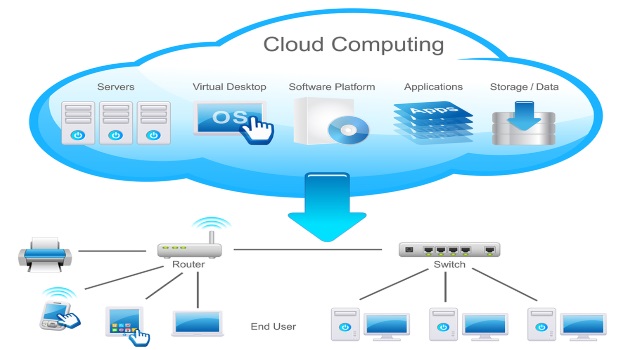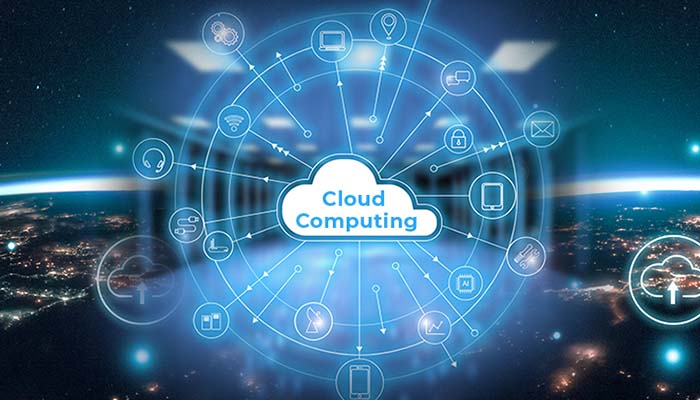
In today’s rapidly evolving digital landscape, optimizing IT budgets is paramount for organizations striving to stay competitive and agile. Cloud services have emerged as a game-changer, offering cost-effective solutions that enable businesses to streamline operations, enhance scalability, and drive innovation. In this article, we explore how cloud services can help organizations optimize their IT budgets, providing insights into the various ways in which cloud computing technologies can deliver value while maximizing cost-efficiency.
Cost Savings through Infrastructure Consolidation
Traditional on-premises IT infrastructure often entails significant upfront capital investments and ongoing maintenance costs. By migrating to the cloud, organizations can eliminate the need for expensive hardware procurement, data center maintenance, and infrastructure upgrades. Cloud service providers offer a pay-as-you-go pricing model, allowing businesses to scale resources based on demand and pay only for the services they consume. Additionally, economies of scale achieved by cloud providers enable them to offer infrastructure services at lower costs compared to self-managed on-premises solutions.
Flexible Resource Provisioning and Optimization
One of the key benefits of cloud computing is its inherent scalability and flexibility. Cloud services allow organizations to provision resources dynamically based on fluctuating demand, thereby avoiding the underutilization or overprovisioning of IT infrastructure. Through features such as auto-scaling and on-demand provisioning, businesses can optimize resource utilization and ensure optimal performance without incurring unnecessary expenses. Moreover, cloud platforms offer a wide range of instance types and pricing options, allowing organizations to select configurations that best align with their workload requirements and budget constraints.
Pay-Per-Use Pricing Model
Cloud computing providers offer a variety of pricing models, including pay-per-use, subscription-based, and reserved instance pricing. The pay-per-use model, in particular, enables organizations to pay only for the resources they consume, eliminating the need for long-term commitments or upfront payments. This granular pricing structure allows businesses to align their IT spending with actual usage patterns, optimizing cost-efficiency and eliminating wastage. Additionally, cloud providers often offer cost management tools and dashboards that provide visibility into resource usage and spending, enabling organizations to monitor and optimize their cloud expenditures effectively.
Reduced Maintenance and Management Overheads
Managing and maintaining on-premises IT infrastructure can be resource-intensive, requiring dedicated personnel for tasks such as hardware provisioning, software updates, and security patching. Cloud services abstract away much of the operational overhead associated with infrastructure management, allowing organizations to focus on core business initiatives rather than routine maintenance tasks. Cloud providers handle infrastructure provisioning, maintenance, and security, freeing up internal IT resources and reducing labor costs. Moreover, cloud platforms often offer built-in automation and management tools that streamline administrative tasks and enhance operational efficiency.
Enhanced Business Agility and Innovation
Cloud computing empowers organizations to innovate rapidly and respond to market changes with agility. By leveraging cloud services, businesses can experiment with new technologies, develop and deploy applications faster, and iterate on solutions more efficiently. Cloud platforms provide access to a rich ecosystem of managed services, development tools, and third-party integrations that accelerate the pace of innovation while minimizing upfront investment. Additionally, the scalability and elasticity of cloud infrastructure enable organizations to scale resources up or down in response to changing business needs, ensuring that IT resources remain aligned with evolving requirements.
Improved Disaster Recovery and Business Continuity
Disaster recovery and business continuity planning are critical components of IT budget optimization. Traditional disaster recovery solutions often involve significant upfront investments in secondary data centers and redundant infrastructure. Cloud services offer cost-effective alternatives for disaster recovery, leveraging geographically dispersed data centers and resilient architecture to ensure high availability and data durability. Cloud-based disaster recovery solutions enable organizations to replicate data and applications to the cloud, providing rapid failover and recovery capabilities without the need for dedicated infrastructure investments.
Total Cost of Ownership (TCO) Analysis and Optimization
Optimizing IT budgets requires a comprehensive understanding of the total cost of ownership (TCO) associated with on-premises versus cloud-based solutions. TCO analysis takes into account not only direct costs such as hardware, software, and operational expenses but also indirect costs such as labor, training, and downtime. Cloud providers offer TCO calculators and cost analysis tools that help organizations evaluate the financial implications of migrating workloads to the cloud. By conducting TCO analyses and comparing on-premises versus cloud-based scenarios, businesses can make informed decisions that maximize cost-efficiency and drive long-term value.
Cloud services offer organizations a compelling value proposition, enabling them to optimize IT budgets while driving innovation and agility. By leveraging cloud computing technologies, businesses can achieve significant cost savings, improve resource utilization, and enhance operational efficiency. From infrastructure consolidation and flexible resource provisioning to pay-per-use pricing models and enhanced disaster recovery capabilities, cloud services provide a myriad of opportunities for organizations to optimize their IT spending and maximize value. As businesses continue to embrace the cloud-first mindset, we can expect to see further advancements in cloud technologies that further enhance cost-efficiency and drive business growth in the digital age.
Emerging Technologies in Cloud Computing: Exploring AI, IoT, and Blockchain Integration
Cloud computing has revolutionized the way businesses operate, providing unprecedented scalability, flexibility, and cost-effectiveness. However, the landscape of cloud computing is continually evolving, with emerging technologies like Artificial Intelligence (AI), Internet of Things (IoT), and Blockchain poised to drive further innovation. In this article, we delve into the intersection of these emerging technologies with cloud computing, exploring how their integration is reshaping industries and opening up new possibilities for businesses.
The Convergence of Cloud Computing and AI
Artificial Intelligence has emerged as a transformative force across various industries, enabling machines to mimic human intelligence and perform tasks that traditionally required human intervention. In the realm of cloud computing, AI is revolutionizing how data is processed, analyzed, and utilized to drive insights and decision-making.
- AI-Powered Cloud Services
Cloud service providers are increasingly integrating AI capabilities into their offerings, empowering businesses to leverage advanced analytics, natural language processing, and machine learning algorithms. These AI-powered cloud services enable organizations to extract valuable insights from vast datasets, automate repetitive tasks, and enhance the overall efficiency of their operations.
- AI-Driven Automation in Cloud Infrastructure Management
AI-driven automation is streamlining cloud infrastructure management, optimizing resource allocation, and enhancing scalability. Machine learning algorithms analyze historical usage patterns and real-time data to predict resource demands accurately, enabling cloud providers to provision resources dynamically and ensure optimal performance while minimizing costs.
- AI-Enabled Security Solutions
Security remains a paramount concern in cloud computing, and AI is playing an increasingly vital role in bolstering defenses against cyber threats. AI-powered security solutions leverage machine learning algorithms to detect anomalies, identify potential security breaches, and respond to incidents in real-time, thereby fortifying the resilience of cloud infrastructure against evolving cyber threats.
IoT Integration with Cloud Computing
The Internet of Things is driving the proliferation of connected devices, ranging from smart appliances and wearables to industrial sensors and autonomous vehicles. By harnessing the power of cloud computing, IoT devices can seamlessly collect, process, and analyze vast amounts of data, unlocking new opportunities for innovation and efficiency.
- Scalability and Flexibility
Cloud computing provides the scalability and flexibility required to accommodate the exponential growth of IoT devices and the data they generate. By offloading data processing and storage to the cloud, IoT deployments can scale effortlessly to support millions of connected devices while adapting to fluctuating demands in real-time.
- Edge Computing and Fog Computing
The integration of IoT with cloud computing has given rise to edge computing and fog computing paradigms, enabling data processing and analysis to occur closer to the source of data generation. By distributing computing resources across edge devices and cloud servers, organizations can reduce latency, conserve bandwidth, and improve the responsiveness of IoT applications.
- Predictive Maintenance and Real-Time Analytics
IoT-enabled devices generate a wealth of data that can be leveraged to optimize maintenance processes, predict equipment failures, and improve operational efficiency. By integrating IoT data streams with cloud-based analytics platforms, organizations can gain real-time insights into asset performance, identify maintenance needs proactively, and minimize downtime.
Blockchain Integration in Cloud Computing
Blockchain technology, originally devised as the underlying framework for cryptocurrencies like Bitcoin, has evolved beyond its financial roots to find applications in various domains, including cloud computing. By providing a decentralized and immutable ledger for recording transactions, blockchain holds the potential to enhance the security, transparency, and efficiency of cloud-based systems.
- Enhanced Data Security and Privacy
Blockchain technology can fortify the security of cloud-based systems by providing cryptographic mechanisms for securing data and transactions. By storing data in a decentralized manner across multiple nodes, blockchain mitigates the risk of single points of failure and unauthorized tampering, thereby enhancing data integrity and privacy.
- Smart Contracts and Decentralized Applications (DApps)
Smart contracts, self-executing contracts with the terms of the agreement directly written into code, enable automated and trustless transactions between parties. By integrating smart contracts with cloud computing platforms, organizations can automate various business processes, such as supply chain management, digital rights management, and decentralized finance (DeFi) applications.
- Supply Chain Traceability and Transparency
Blockchain technology facilitates end-to-end traceability and transparency in supply chains by recording the provenance and movement of goods and assets on an immutable ledger. By integrating blockchain with cloud-based supply chain management systems, organizations can enhance visibility into supply chain operations, mitigate counterfeiting and fraud, and ensure compliance with regulatory requirements.
The convergence of Artificial Intelligence, Internet of Things, and Blockchain with cloud computing is driving a paradigm shift in how businesses leverage technology to innovate and compete in the digital age. By harnessing the synergies between these emerging technologies, organizations can unlock new opportunities for efficiency, scalability, and security, paving the way for a future defined by intelligent, interconnected, and resilient cloud ecosystems. As businesses continue to embrace the potential of these technologies, we can expect to see further advancements and transformative applications that reshape industries and redefine the possibilities of cloud computing.


